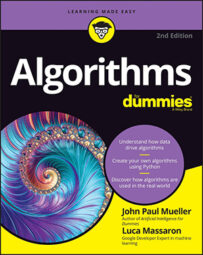The problem is one in which the human fails to appreciate the limited view of data that a computer has.
Understanding a computer's point of view
A computer has a simple view of data, but it's also a view that humans typically don't understand. For one thing, everything is a number to a computer because computers aren't designed to work with any other kind of data. Humans see characters on the computer display and assume that the computer interacts with the data in that manner, but the computer doesn't understand the data or its implications. The letter A is simply the number 65 to the computer. In fact, it's not truly even the number 65. The computer sees a series of electrical impulses that equate to a binary value of 0100 0001.Computers also don't understand the whole concept of uppercase and lowercase. To a human, the lowercase a is simply another form of the uppercase A, but to a computer they're two different letters. A lowercase a appears as the number 97 to the computer (a binary value of 0110 0001).
If these simple sorts of single letter comparisons could cause such problems between humans and computers, it isn't hard to imagine what happens when humans start assuming too much about other kinds of data. For example, a computer can't hear or appreciate music. Yet, music comes out of the computer speakers. The same holds true for graphics. A computer sees a series of 0s and 1s, not a graphic containing a pretty scene of the countryside.
It's important to consider data from the computer's perspective when using algorithms. The computer sees only 0s and 1s, nothing else. Consequently, when you start working through the needs of the algorithm, you must view the data in that manner. You may actually find it beneficial to know that the computer's view of data makes some solutions easier to find, not harder.
Arranging data makes the difference
Computers also have a strict idea about the form and structure of data. When you begin working with algorithms, you find that a large part of the job involves making the data appear in a form that the computer can use when using the algorithm to find a solution to an issue.Although a human can mentally see patterns in data that isn't arranged precisely right, computers really do need the precision to find the same pattern. The benefit of this precision is that computers can often make new patterns visible. In fact, that's one of the main reasons to use algorithms with computers — to help locate new patterns and then use those patterns to perform other tasks. For example, a computer may recognize a customer's spending pattern so that you can use the information to generate more sales automatically.

